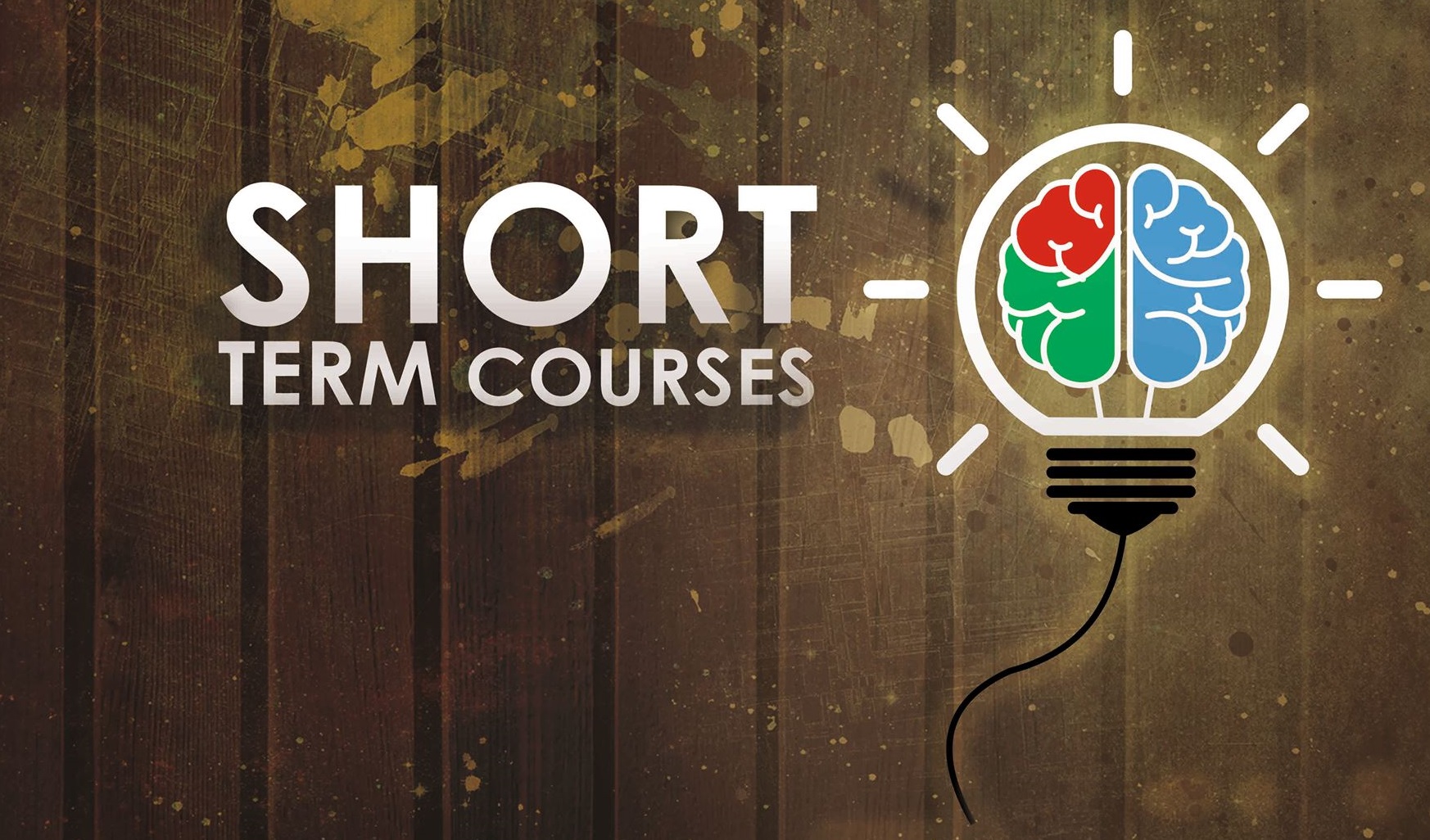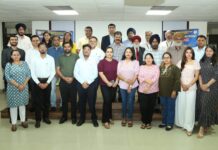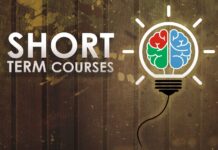Archaeology and epigraphy stand as twin pillars illuminating our past, yet each confronts distinct prospects and challenges. Archaeology unearths tangible remnants, offering glimpses into ancient civilizations, but faces the threat of irreversible decay. Meanwhile, epigraphy interprets inscriptions, unlocking forgotten languages and narratives, yet struggles with decoding hurdles and fading artefacts. Together, Archaeology and epigraphy forge a narrative tapestry, but their journey is marked by the constant battle against time and the persistent quest for preservation and understanding. In this context, the Department of History, School of Liberal and Creative Arts in collaboration with the Human Resource Development Center (HRDC) conducted a ‘Short-Term Course on Archaeology and Epigraphy: Prospect and Challenges’ w,e,f. April 01, 2024 to April 06, 2024.
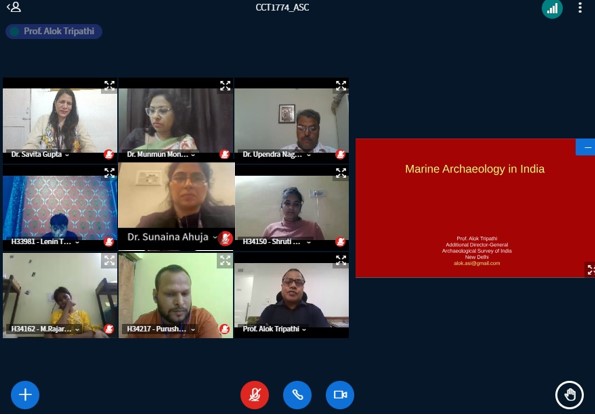
Course aimed at enhancing the understanding of the methodologies and key findings in marine archaeology in India, examining the evolution of prehistoric cultures in India, exploring the significance of intangible cultural heritage in India, including oral traditions, performing arts, rituals, and traditional knowledge systems, and their preservation challenges and investigating the principles and practices of epigraphy, focusing on deciphering inscriptions, understanding their historical context, and interpreting their contributions to Indian history and culture.
Dr. Sunaina Ahuja, Professor and Dean, Head – of Human Resource Development Center (HRDC), LPU the convener of the program, warmly welcomed the participants and mentioned that archaeology and epigraphy stand as torchbearers, illuminating the forgotten corridors of human memory, shaping our understanding of who we are and from where we came. Dr. Ahuja highlighted that the integration of theory with practical applications is key as it equips participants with the necessary tools to not only comprehend but also apply their knowledge effectively. By doing so, participants will be empowered to understand historical contexts and will contribute meaningfully to the preservation and interpretation of heritage.
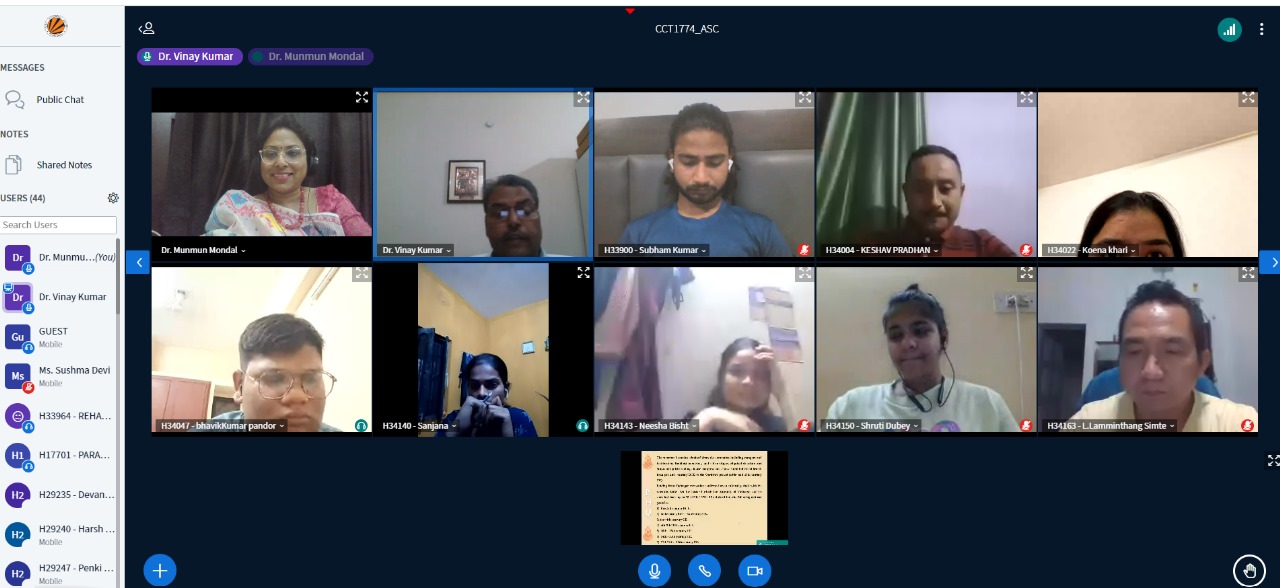
Dr. Manvendra Singh, Associate Professor, School of Liberal and Creative Arts (Social Sciences & Languages), LPU, co-convener of the program, gave an overview of the course curriculum, elucidating its core objectives and significance in advancing knowledge and research in the fields of archaeology and epigraphy. He emphasized the importance of structured methodologies such as fieldwork techniques, data analysis, and interpretation skills in promoting scholarly excellence and intellectual growth. He mentioned through exploration and interactive sessions, participants will develop a deeper understanding of historical civilizations and cultural heritage, empowering them to contribute meaningfully to the fields of archaeology and epigraphy.
The resource panel included Prof. Alok Tripathi, Assistant Director General, Archaeological Survey of India, New Delhi, Dr. T. S. Ravishshankar Srinivasan, Director, Epigraphy Branch, Archaeological Survey of India, Mysuru, Dr. Ranbeer Singh Rajput, Deputy Director, Bihar Museum, Patna, Dr.Vinay Kumar, Associate Professor, Department of History, BHU and Dr. Munmun Mondal, Assistant Professor, Department of History, LPU.
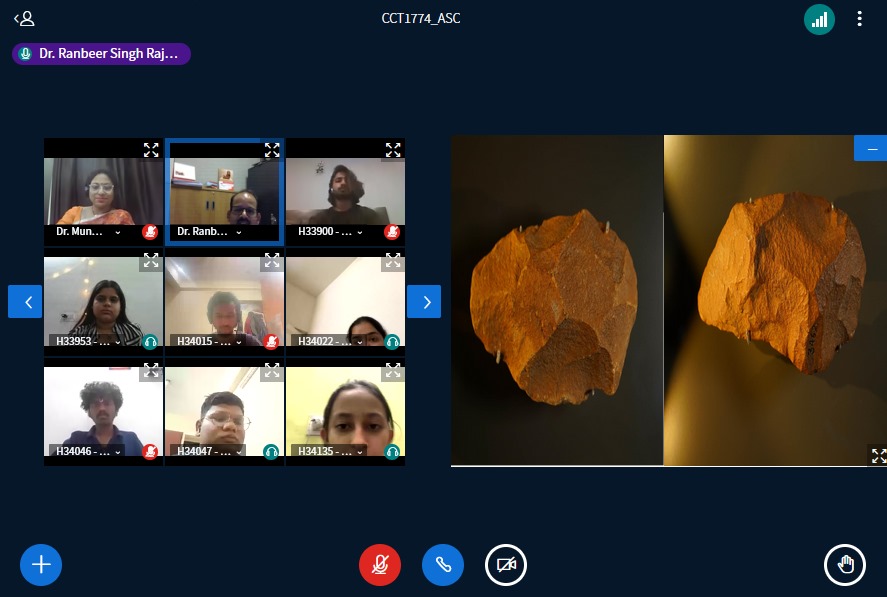
Day 1: Module 1: Marine Archaeology in India
The inaugural day of the program commenced with an enlightening session on Marine Archaeology in India, conducted by Prof. Alok Tripathi. The session delved into the significance of underwater archaeological explorations in uncovering India’s rich maritime history. Prof. Tripathi discussed various methodologies employed in marine archaeological research, emphasizing the challenges and advancements in the field. Participants gained insights into the submerged cultural heritage sites along India’s vast coastline, highlighting their cultural, historical, and economic importance. Prof. Tripathi’s expertise provided a comprehensive understanding of the complexities involved in studying and preserving maritime archaeology, setting a robust foundation for further exploration in the discipline.
Day 2: Module 2: Prehistoric Archaeology in India
Dr. Ranbeer Singh Rajput took the stage on the second day to discuss prehistoric archaeology in India. Through an engaging presentation, Dr. Rajput navigated through the depths of time, unravelling the mysteries of early human settlements and cultural evolution on the Indian subcontinent. Participants were enlightened about the significance of prehistoric sites, such as the Indus Valley Civilization and the Vedic period, in shaping India’s ancient heritage. Dr. Rajput’s expertise shed light on the methodologies used to unearth artefacts and interpret human behaviour from prehistoric contexts, providing Participants with a profound understanding of India’s archaeological past.
Day 3: Module 3: Intangible Cultural Heritage of India
Dr. Munmun Mondal conducted an insightful session on the intangible cultural heritage of India, highlighting the importance of preserving traditions, rituals, and oral histories that constitute the fabric of Indian society. Attendees were immersed in a discussion about the diverse forms of intangible heritage, including folk music, dance, festivals, and traditional craftsmanship. Dr. Mondal emphasized the need for safeguarding intangible heritage amidst modernization and globalization, advocating for community involvement and grassroots initiatives. Through engaging anecdotes and case studies, Dr. Mondal highlighted the significance of intangible cultural heritage in fostering identity, social cohesion, and sustainable development in India.
Day 4: Module 4: Dynamics of Epigraphy
Dr. T.S. Ravishshankar Srinivasan elucidated the intricacies of epigraphy on the fourth day of the program, offering participants a deep dive into the study of inscriptions and their role in interpreting historical narratives. Through a meticulous analysis of epigraphic materials from various periods of Indian history, Dr. Srinivasan elucidated the evolution of scripts, languages, and writing traditions across different regions of India. Attendees gained insights into the methodology of epigraphic studies, including palaeography, chronology, and epigraphic analysis, enabling them to decipher inscriptions and extract valuable historical information. Dr. Srinivasan’s expertise provided participants with a comprehensive understanding of the significance of epigraphy as a crucial source for reconstructing India’s past.
Day 5: – Module 5: Recent Archaeological Excavation in India
Dr. Vinay Kumar conducted a session on recent archaeological excavations in India, offering participants a glimpse into the latest discoveries and research in the field of archaeology. Through an exploration of notable excavation sites and findings across India, Dr. Kumar showcased the interdisciplinary nature of archaeological research, integrating scientific techniques with historical inquiry. Participants were presented with groundbreaking discoveries, ranging from ancient cities and monuments to artefacts that shed light on India’s cultural heritage and historical trajectories. Dr. Kumar’s presentation sparked discussions on the implications of recent archaeological excavations for understanding India’s past and informing future research endeavours.

Day 6: Module 6: Important Brahmanical and Jain Iconographic Representation
The program concluded with a captivating session by Dr. Munmun Mondal on important brahmanical and jain iconographic representations, providing attendees with a nuanced understanding of religious iconography in Indian art and culture. Dr. Mondal focused on symbolism and iconographic motifs found in Brahmanical and jain traditions, elucidating their theological significance and cultural contexts. Attendees were introduced to iconic representations of deities, saints, and mythical beings, exploring their visual narratives and symbolic meanings. Dr. Mondal’s expertise in art history and religious studies enriched participants’ appreciation of the intricate connections between religion, iconography and artistic expression in India’s cultural heritage.
Top of Form
Subject Matter Experts (SMEs) strategically incorporated collaborative learning techniques, including demonstrations and case-based teaching, fostering an engaging and interactive learning environment. Post-training evaluation serves a crucial role in gauging the efficacy of the STC. Employing MCQ and project-based evaluation, participants were assigned projects wherein they were asked to submit a PowerPoint presentation on any of the assigned topics namely a case study on marine archaeological discoveries in India/world, Asokan epigraphical record: Its context and importance in history with example prehistoric archaeological sites in India and its relevance in the reconstruction of history and recent archaeological excavations and material remain in India. Through reflection and analysis, participants gained insights into archaeology and epigraphy.
Dr. Manvendra Singh, Associate Professor, School of Liberal and Creative Arts (Social Sciences & Languages), LPU, co-convener of the program applauded the organizing team and resource persons for conducting a meaningful short-term course, successful in meeting participants’ expectations. Feedback was solicited from the participants in response to which they appreciated the gesture shown by the LPU-HRDC in terms of choice of subject matter experts and curriculum framed to make us clear about archaeology and epigraphy.


